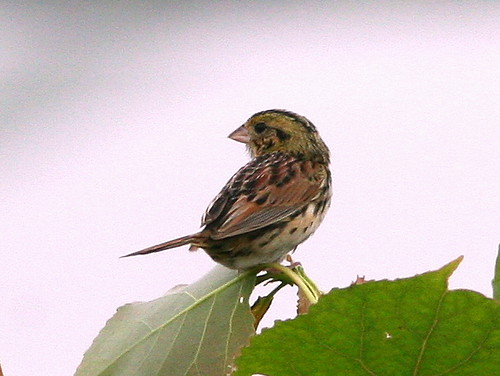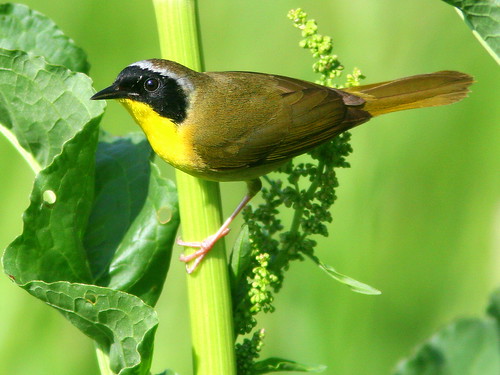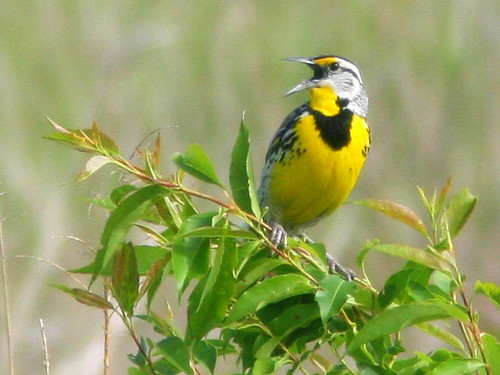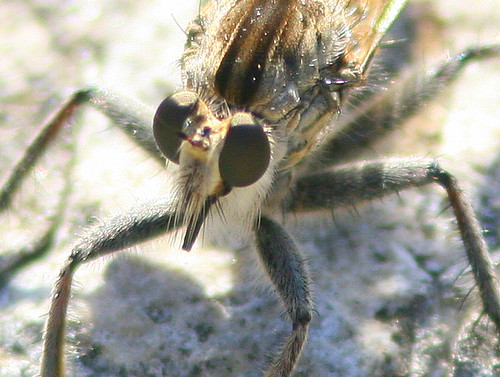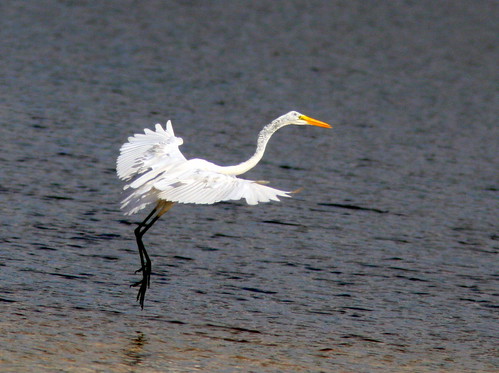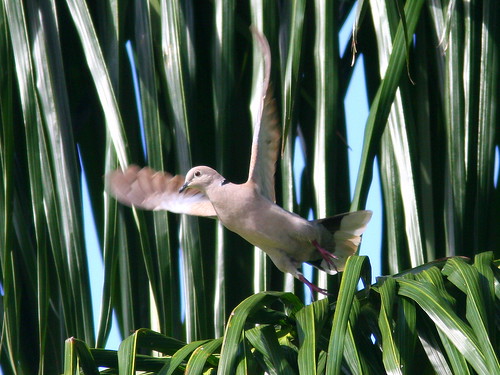Posted by: Ken @ 11:55 am
As the day of our departure from Chicagoland drew near, our birding concentrated on woodland migrants. We still had not explored the prairie habitat at Nelson Lake/Dick Young Forest Preserve near our Kane County second home. We used the last of our free time to walk the two mile loop around the grasslands, hoping to see returning Dicksissels, Bobolinks and threatened Henslow’s Sparrows. We saw none of these three species. It may have been a bit early for them, and extensive controlled burns had reduced the amount of cover.
Henslow’s Sparrows prefer to build their nests where there is an accumulation of dead grass stalks from at least one previous summer. They also abandon a grassland after too much litter accumulates on the ground, so a cycle of wildfire or controlled burns is essential to provide them with suitable breeding habitat. Researchers have found that Henslow’s Sparrows tend to shun islands of apparently favorable habitat that are surrounded by freshly burned or overgrown grassland. Last fall, the area of controlled burns at Nelson Lake was much larger than in previous years, but there are still some sections of prairie that look favorable for this species. I just hope that the spared areas are not too fragmented. Bobolinks also seem to like more expansive areas of high grass, while Dicksissels appear less selective, being found along overgrown fence rows as well as the open prairie.
Last year, I photographed this Henslow’s Sparrow in mid-June at Nelson Lake:
The morning was clear and the temperature was in the mid-60s, although a stiff northerly breeze made us feel chilly. Red-winged Blackbirds were nesting, and singing “Conk-Ra-Lee.” We also heard songs of American Goldfinches and Savannah Sparrows.
The songs of Common Yellowthroats filled the air:
Eastern Meadowlarks added to the chorus:
Sedge Wrens found the edges of the trail and the margins of burned areas particularly inviting. We heard them about every 100 yards along the path:

In a small willow tree along the creek at the west end of the lake, an aptly named Willow Flycatcher perched: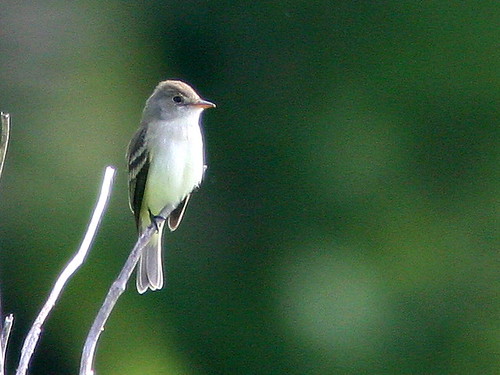
It was easy to photograph him singing, as the song has two syllables: “Fitz-Byew.” I simply clicked the shutter when I heard the “Fitz.”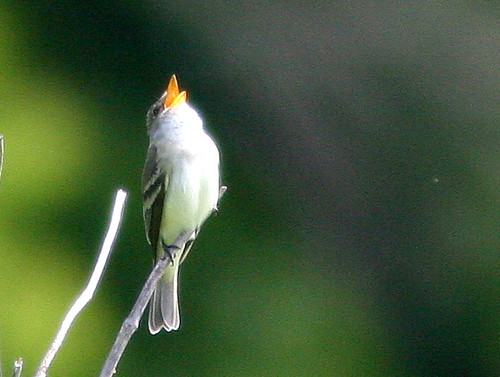
Maintaining two homes that are 1400 miles apart creates some inconveniences. It means that you must have two of everything, from can openers to vehicles and major appliances. We waste time flying between Florida and Illinois and back again– not only an entire day on limos and airplanes, but days before and after the trip. First we have to pack and get ready to travel, then unpack and shop for groceries at the other end. We often plan around important events such as birthdays, dance recitals and medical and dental appointments. Arriving in Illinois in early spring, we wanted to rush out and greet the migrating birds. Before departing we squeezed in as much time in the field as possible.
Once back in Florida, after several days of necessary domestic chores, I grew increasingly restless and in need of my minimum daily requirement of 20 bird species (BirdChaser’s “Birding RDA”)
Finally, I broke free and walked my local “patch” of recovering Everglades. Although I began my walk a little after 7:00 AM, the sun bore down and the temperature quickly climbed into the low 90s.
During our absence, had a snow-covered mountain appeared on the South Florida horizon?
For a moment, I thought I was in Oregon or Washington State! No, this is not photoshopped– this mountain of “coral” (limestone) rock is being mined from the bottom of a deep flooded quarry at the foot of the 196th Avenue canal, about 1 1/2 miles to the south. Over 15 square miles of wetlands in far NW inhabited Miami-Dade County have been permitted for rock mining. In addition to the threat to the Everglades ecosystem, groundwater pollution of several nearby water wells is a concern of conservationists. Nearby homeowners blame the daily blasting for cracks in foundation slabs.
I’ve never before seen the stone piled this high. This photo is taken from 1 1/2 miles away, and you can’t really see the bottom of the “mountain.” I wonder if this is the highest topographic point in South Florida. Demand may be down and they are stockpiling it. Much gets exported– Panama is said to be a big customer. The lake formed by this quarry must be very deep– at least 100 feet. Surely it penetrates the aquifer. I don’t know how they can keep from contaminating the ground water this way.
Along the canal, Deer Flies ignored the insect repellent and bit at my face and neck.The jaws of this Robber Fly appear menacing, but it prefers to eat other insects:
The Red-winged Blackbirds made me feel as if I were back in Illinois:
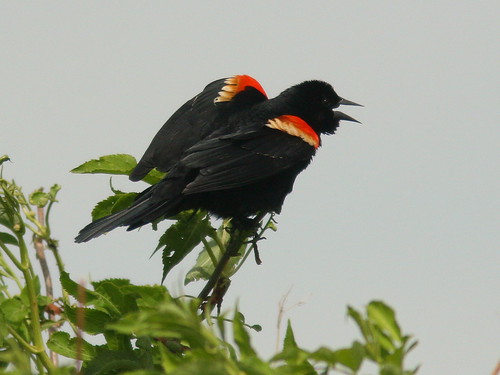
I disturbed a male Northern Flicker eating ants along the levee, and from the seclusion
of a small tree, he waited to resume the feast :
Surprise! The flicker has blue eyelids:
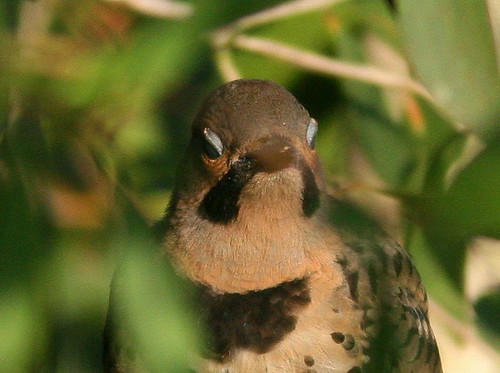
This Northern Cardinal looked and sounded just like those in Illinois: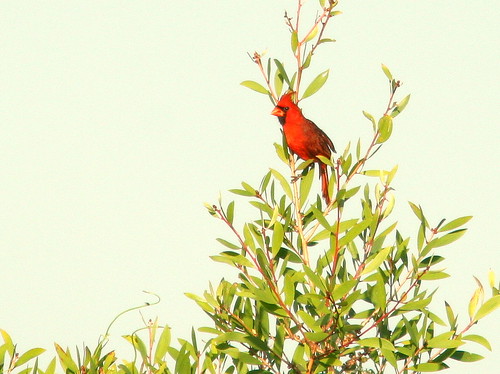
However, an Eastern Towhee’s weak song (”ti-ti-te-e-e-e-e-e” instead of “Drink Your Tea!”) and calls (”treee?” instead of “Chew-ink?”) differed markedly from those in the north, and its eyes are straw-yellow instead of red as in its Illinois counterparts:
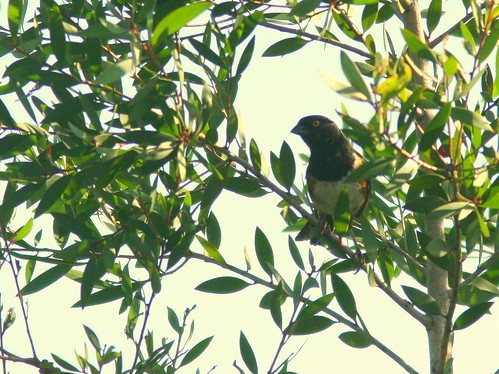
This Loggerhead Shrike scolded the mockingbirds that were harassing it: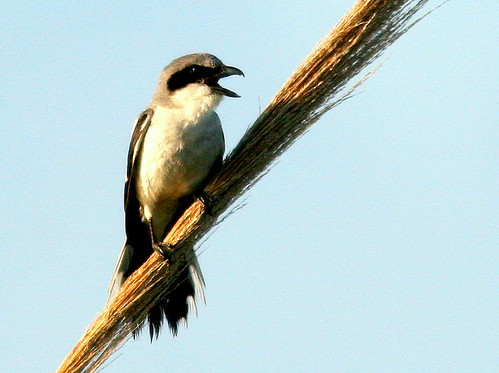
Unusually, a Common Nighthawk foraged in the daylight. I was lucky to capture it in erratic flight:
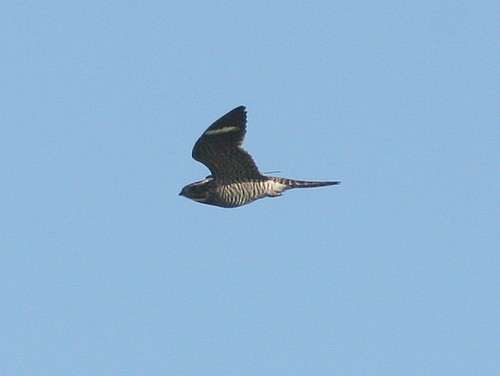
White Peacock butterflies patrolled small stretches of the path, chasing after females and repelling rivals:
An Anhinga reminded me that I was back in Florida:
A Great Egret was the only long-legged wader I encountered, and by now I had only seen 18 of the 20 species that would satisfy my “RDA.”
A Mottled Duck enlarged my list to 19…
…and, on the way back, a Eurasian Collared-Dove lofted gently from the top of a Royal Palm, bringing my total to 20:
Back at the house, I later saw a Blue Jay and a Little Blue Heron. That evening, a high-stepping Snowy Egret walked the lake at the edge of our back lawn, the 23rd species for the day. I had exceeded my RDA:













